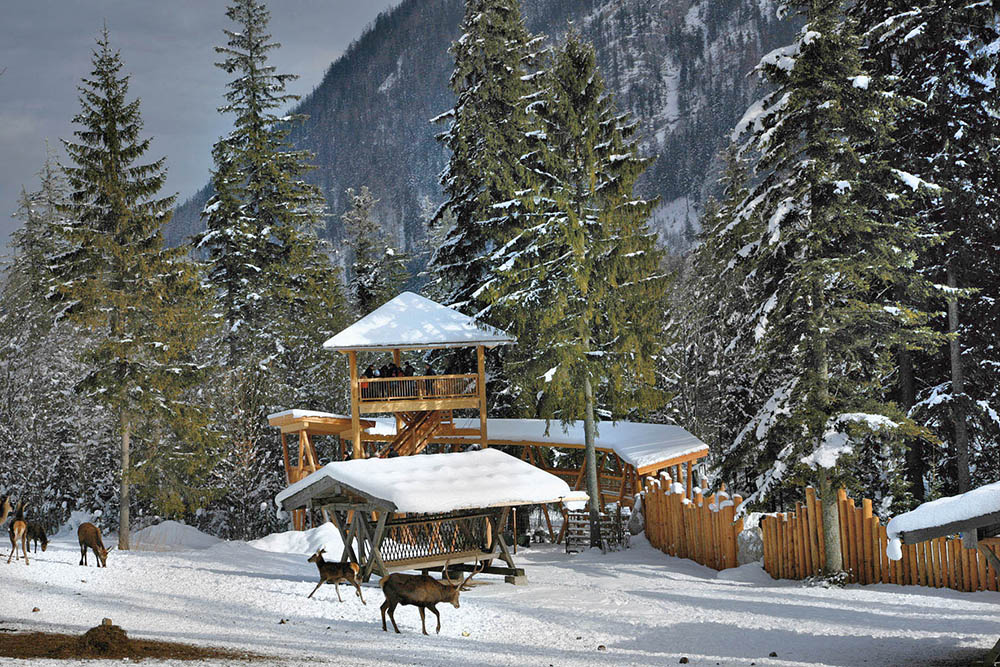Game feeding in winter

In winter, with a little luck, you can observe up to 50 red deer and hinds with their calves at the game feeding station in Klausbach Valley. But why is the red deer actually fed in a national park?
The reason for this is the protection of the mountain forest. In the past, the deer used to leave the area of the current national park in winter to look for food in the Alpine foothills, where there is less snow. Today, roads and settlements hinder these migrations and the red deer are forced to spend the winter in the high mountains. To avoid browsing and shearing damage in the mountain forest, the animals are fed. Much to the delight of the visitors, who can observe the red deer in the approximately 45 hectare gate in the Klausbach valley from December to April.
Horse rides to feed the game
The way to the game feeding is - depending on snow conditions - barrier-free. In the winter months, a horse-drawn carriage takes guests to the feeding (approx. 20-minute ride). The trips also take place when there is no snow (carriages).
Registration by phone is required, there is a charge for the trips.
Organizer
Tourist-Information Ramsau
Im Tal 2
83486 Ramsau